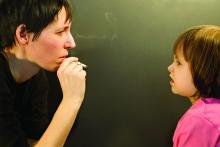Children are increasingly less likely to be exposed to secondhand cigarette smoke in the home, but cannabis seems to be picking up some of the slack, according to Renee D. Goodwin, PhD, and her associates.
Using a study population of 169,259 adults with data available from the National Survey on Drug Use and Health, the researchers found that from 2002 to 2015, the prevalence of parents with children in the home who were also current smokers dropped from 27.6% to 20.2%. By contrast, the rate of cannabis usage increased from 4.9% to 6.8% over the same time period. Overall, the rate of children living in a home with secondhand smoke fell from 29.7% to 23.5%.
In addition, the number of parents who smoked both cannabis and cigarettes increased from 11.0% in 2002 to 17.4% in 2015. Cannabis usage was nearly four times more likely in cigarette smokers than in non–cigarette smokers (odds ratio, 3.88), as was daily cannabis usage (OR, 3.70). Dual usage was significantly more likely in younger parents, with 20.4% of cigarette-smoking parents aged 18-25 years also using cannabis, compared with parents aged more than 50 years, who used cannabis at a rate of 7.0%.“Public health efforts that have shown success in decreasing exposure to STS [secondhand tobacco smoke] in the home may be complicated by increased use of other smoked products, such as cannabis. Parents may benefit from education about protecting children from marijuana products, paraphernalia, waste, and smoke,” the investigators concluded.
SOURCE: Goodwin RD et al. Pediatrics. 2018 May 14. doi: 10.1542/peds.2017-3506.


